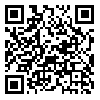دوره 8، شماره 2 - ( 2-1402 )
جلد 8 شماره 2 صفحات 233-221 |
برگشت به فهرست نسخه ها
Download citation:
BibTeX | RIS | EndNote | Medlars | ProCite | Reference Manager | RefWorks
Send citation to:



BibTeX | RIS | EndNote | Medlars | ProCite | Reference Manager | RefWorks
Send citation to:
Mohammadi-Nasrabadi F, Omidvar N, Vedadhir A, Khoshfetrat M, Houshyar-Rad A, Zerafati-Shoae N et al . Cash Transfer versus Staple Food Subsidies: An Effective Factor on Food Security and Expenditure of Urban Households in Iran. JNFS 2023; 8 (2) :221-233
URL: http://jnfs.ssu.ac.ir/article-1-516-fa.html
URL: http://jnfs.ssu.ac.ir/article-1-516-fa.html
Cash Transfer versus Staple Food Subsidies: An Effective Factor on Food Security and Expenditure of Urban Households in Iran. Journal of Nutrition and Food Security. 1402; 8 (2) :221-233
چکیده: (2613 مشاهده)
In 2010, food subsidy program implemented since 1979 was replaced by unconditional cash transfer (CT) in Iran. The present pre-and-post evaluation study aims to compare food security and expenditures of urban households during the implementation of food subsidy and CT programs. Methods: Using a stratified cluster sampling method, 266 households were selected from Tehran city. Data were collected in two phases: before (2009) and after (2012) implementing CT program using questionnaires including demographics; household expenditure; locally validated Household Food Insecurity Access Scale (HFIAS); and three consecutive 24-hours diet recalls. Seven focus group discussions (FGDs) with women were also held. Results: After implementing CT program, the households' food and total expenditures increased and their family size decreased. Mild, moderate, and severe food insecurity increased from 19.3%, 13.3%, and 11% to 28.4%, 15.5%, and 12.5%, respectively (P<0.001). There was a significant decrease in consumption of fat and oils and sugary food groups (time effect P<0.05). The consumption of fruits, meat, and dairy products was lower in the food insecure women than in the food secure ones (group effect P<0.05). However, the food secure and insecure households behaved differently in terms of only sugar consumption (time group effect P<0.05). Based on the FGDs, relative deprivation and social gaps increased. Conclusion: Considering the reduction in welfare index, targeting poor/vulnerable groups, as well as conditional CT could be considered in Iran
دریافت: 1400/8/16 | انتشار: 1402/2/30 | انتشار الکترونیک: 1402/2/30
| بازنشر اطلاعات | |
 |
این مقاله تحت شرایط Creative Commons Attribution-NonCommercial 4.0 International License قابل بازنشر است. |





